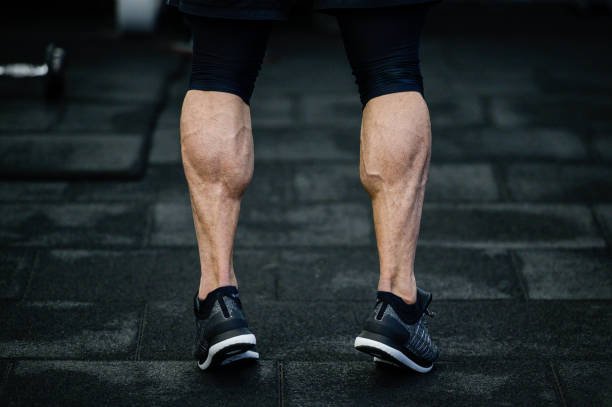Calf Injuries in Runners
Do you get calf soreness following a run? Or, have you strained your calf and it hasn’t fully recovered?
Persistent calf pain during or after running usually means your calf muscles need to be stronger!
This blog will focus on:
The role and function of your calf muscles
How calf injuries occur
What you need to do to fix your calf issues for good
The perfect calf raise
The Role and Function of the Calf Muscles
There are two main muscles of the calf. The gastrocnemius and the soleus. The gastrocnemius is the larger muscle at the top of your calf, with two large heads consisting mostly of fast twitch muscle fibres. Therefore, it’s role is to generate large amounts of force, e.g. jumping, sprinting.
The soleus is a wide flat muscle that is deeper to the gastrocnemius, and extends lower in the leg. It’s mostly made up of slow twitch muscle fibres, so the soleus is used for lower intensity activities, e.g. walking, jogging, cycling. This muscle has huge endurance and is responsible for getting you through your long runs.
How Calf Injuries Occur
Running is essentially hopping from one leg to another. This is quite a challenging movement, and a lot of the force is absorbed and generated by your calf muscles. If your calves are not strong enough for the amount of running you’re asking of them, you are bound for an injury!
Since the gastrocnemius is more active in high intensity movements, it is usually injured by sprinting or jumping. A gastrocnemius strain usually gives you no warning - one fast movement too many and it goes. It will likely be very painful and difficult to walk immediately afterwards. Comparatively, soleus injuries can develop more gradually from overloading lower intensity activity. You may notice your calf is feeling tighter and tighter through your run, then one hill too many, and you feel it seize up. Again, this is going to be very painful immediately afterwards.
If you’ve strained your calf very recently, check out our blog on how to manage an acute injury here: https://www.swellphysiopilates.com.au/blog/acute-injury.
If your injury is more than a week or two old, or you haven’t strained your calf but are getting persistent tightness when you run, read on for how to solve the problem.
Fix Your Calf Issues For Good
Since weakness is usually the main culprit when it comes to injuring your calves, strengthening is your knight in shining armour. Stronger muscles will give your calves greater training capacity, allowing you to increase your training loads (e.g. pace, distance, elevation).
Below is a simple and effective rehab plan to bulletproof your calves. The goal for each of these progressions is 25-30 repetitions. To find the appropriate level for yourself to work at, start at level 1, if you can do 30 reps, move to level 2, and so on. If you can’t reach 30, this is the right level of calf challenge for you.
You want to work on these exercises between 2-4 times per week. If you get sore, take an extra day off, or drop back a level. As you get stronger, progress forwards!
The Perfect Calf Raise
There are many ways to cheat your way out of a good quality calf raise, e.g:
Bending your knee prior to pushing through your foot (creates momentum).
Assisting with your arms (decreases weight).
Dropping down too quickly (lack of control) and creates a bouncing action (using momentum).
A good quality calf raise should consist of:
Even weight distribution through the forefoot.
Controlled movements (1sec ascending, 2-3sec descending).
Heel should be travelling vertically up and down, the ankle should not be unstable or wobble.
Keeping the leg straight by squeezing/engaging your quadriceps muscles.
Quality reps will ensure that the calf is being isolated and contracted through its whole range, ensuring strong and healthy calves running into the future.
You should now have a good idea of what you’ve injured, what you need to do to get stronger, and how to nail your calf raises. If you need any more guidance with your calf rehab, get in touch with us here. 🙂





